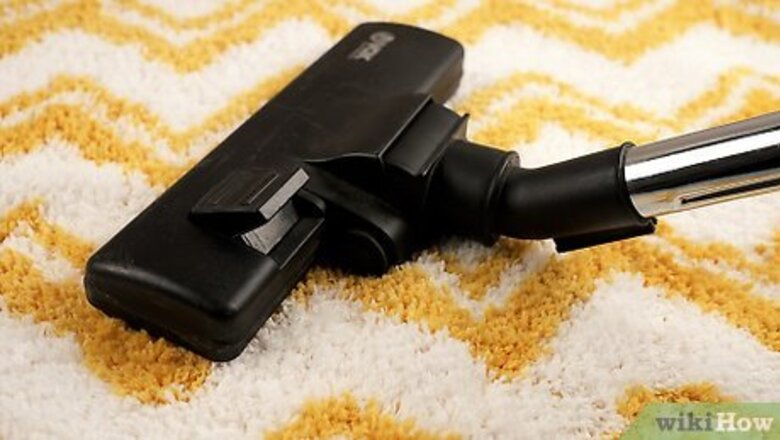
views
Maintaining a Clean Rug
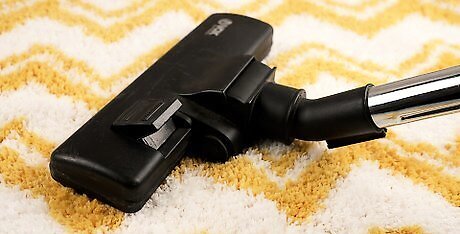
Vacuum your rug regularly. To maintain an area rug, at least once a month flip it upside down and vacuum the back of the rug. Vacuuming the back with the beater bar/rotating brush helps push dirt trapped deep down toward the top of the rug. Flip it right side up and vacuum the dirt. Use only suction on the front of wool rugs, for synthetic rugs you can use the beater bar/rotating brush on the front and back. Do not vacuum fringe or tassels. They are delicate material, and easily tangled in the vacuum’s beater bar or ripped by the suction. Fluffing them by hand is all they need. Anything else can cause damage to them. Vacuum wool rugs only a few times a month. Vacuuming more often can pull out the fibers.
Rotate the rug to even out wear and tear. Foot traffic patterns can beat tracks into the pattern and fibers of a rug. This can be prevented by rotating your area rug regularly so as to avoid the formation of this unsightly wear. If your furniture is resting on a rug, consider moving your furniture regularly to avoid impressions or uneven fading on the rug. You can also turn your rug every other month to even out wear.
Roll rugs for moving and storage. Keep the roll as tight as possible. This prevents creases and folds from forming in the rug. It is also significantly easier to break down, move, and store the rug when it is rolled. If you are transporting the rug for steam cleaning or dry cleaning you will need to roll the rug beforehand.
Use diluted white vinegar to restore carpet color and shine. Dilute the vinegar, 1 part to 3 parts water, and blot slowly and in the direction of the carpet pile with a sponge. Do not soak the carpet, merely dampen it. Allow it to air dry while avoiding exposure to the sun, which can bleach colors.
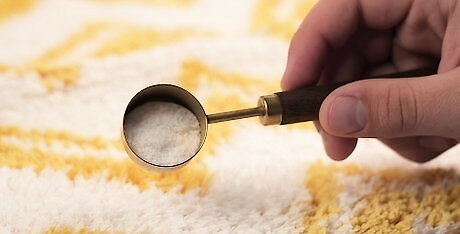
Sprinkle Borax on the rug to remove any insect infestation. Steam cleaning and shampooing are ineffective at controlling insect colonies. Borax naturally coats and degrades the exoskeletons of insects and destroys larvae and eggs. Sprinkle on the rug, wait approximately 20 minutes, and vacuum. Make sure there are no pets near the rug that could potentially inhale the Borax, which is a mildly toxic irritant.
Treating Spots and Stains
Clean spots or stains as soon as they appear. Always test your rug with a damp white cotton towel to make sure the colors will not run or bleed. Never allow your rug to dry on the floor, as this can cause damage to the floor and lead to permanent water damage. Avoid carpet shampoo on wool rugs. Carpet shampoos are usually made for synthetic wall to wall carpet and not wool area rugs. Always check the label before using any spot cleaners or rug shampoos. After using a spot cleaner or shampoo, make sure you rinse it all out. If there is any soap residue left in the rug it will attract dirt.
Blot the spillage and remove any solid debris by scraping. Blot using a clean white 100% cotton dry towel. Press down very hard from the outside towards the middle. Do this repeatedly, turning the folded towel over and over until you have absorbed as much moisture as possible. When you blot the spot move the towel in straight lines. Do not rub in a circle, as this can damage the fibers and construction of the rug.
Treat the rug according to the spill. Mud and mild stains can be treated simply by blotting dry and vacuuming. More complicated or serious stains require some chemical intervention, normally in the form of a mild acid to remove the dyes staining the carpet, a light detergent to remove any debris and disinfect, and ammonia in non-wool rugs to the same effect. If the rug is soaked, use a shop vacuum to suck up the moisture. Dry it as well as you can and take it to a cleaner’s. Water damage cannot be reversed or treated at home without significant expertise, care, and hardware. If the spillage is perishable, care must be taken to rinse the area thoroughly with mild detergent and water to prevent souring of the residue. Using liquid dish soap diluted 2:1 with water will help remove and disinfect the spillage. Apply to a white cotton towel and blot until as much of the spill as possible is absorbed. For stains that require treatment with ammonia, take valuable rugs to a professional. Do not use ammonia or harsh detergents on wool rugs as the fibers will shrink and degrade with every water treatment. Take your rug to a professional cleaner to minimize cleaning-associated damage. For spills of perishable items, do not use hot water. Blot with a sponge, and treat with three parts acid, one part mild detergent, and one part water. If the rug is not wool, add a part of ammonia for disinfecting and cleaning. Neutralize odors from urine accidents and remove stains by mixing 1 part white vinegar with 3 parts water and 1/3 part detergent and blot with white towel or clean sponge. Repeat the treatment for stains if the rug is discolored.
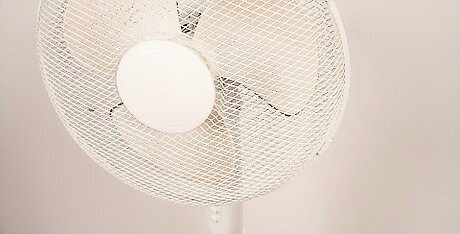
Use a fan to dry the rug. Expose as much of the affected area as possible to the air stream to aid in evaporating moisture. Do not allow the rug to dry in the open sun, as photobleaching can ruin the colors in the rug and cause degradation of fibers. Do not allow the rug to dry on the floor, instead, place it on a drying rack.














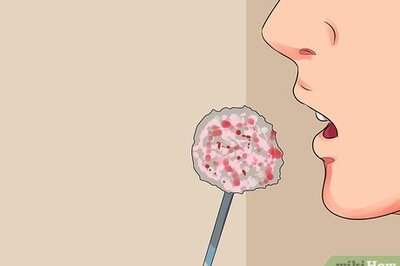


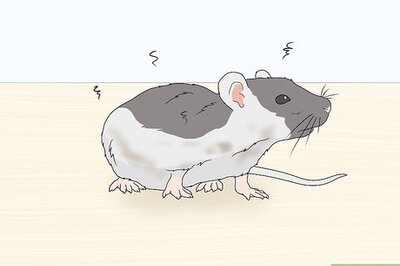


Comments
0 comment